Halloween May Be a Modern Holiday, But It’s Rooted in Ancient Pagan Traditions
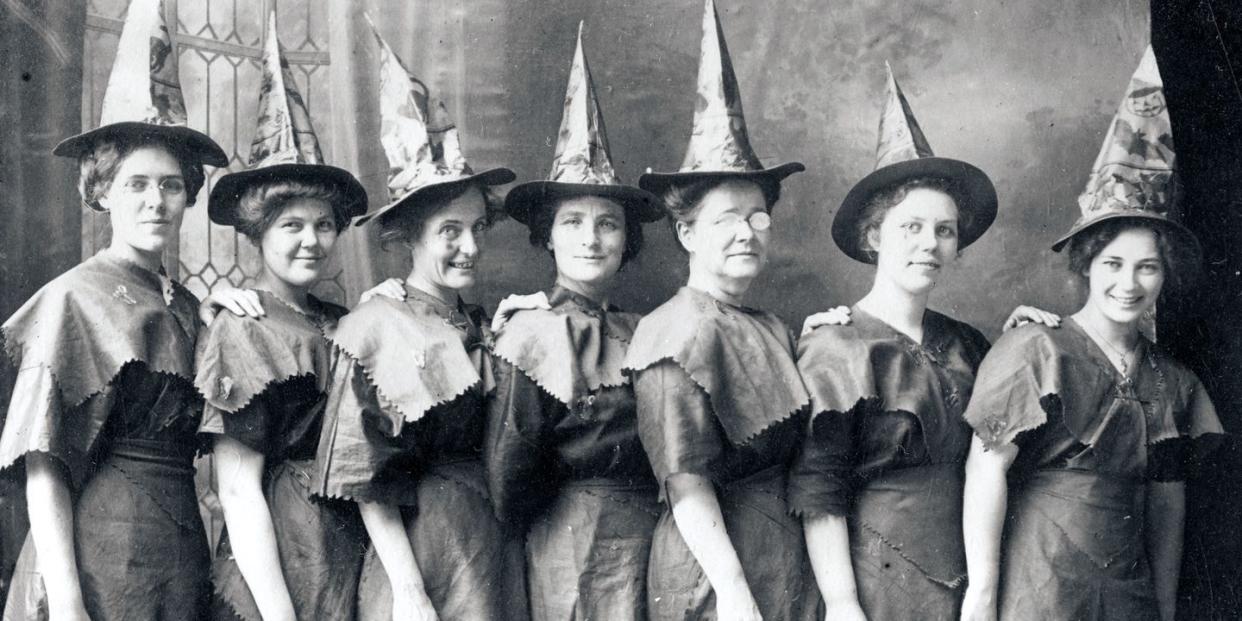
"Hearst Magazines and Yahoo may earn commission or revenue on some items through the links below."
As the sun sets on October 31, spirits will rise to haunt the living—or so the story goes.
It’s the ancient premise of the modern spooky holiday of Halloween. These days, such superstitions are recounted more for the fun of it, but many of our current Halloween traditions are rooted far in the past, in genuine religious and cultural beliefs.
🎃 Don’t miss any of our best-in-class explainers and guides. Join Pop Mech Pro.
The origin of Halloween is often attributed to the ancient Celtic celebration of Samhain (pronounced “sow-in”), which marked the end of summer and its harvest and the beginning of winter. For the Celts, who lived in ancient Britain and Ireland, it also marked the start of the new year. Samhain starts on the evening of October 31 and lasts through the night on November 1. Many neo-pagans, which are modern-day practitioners of various pagan religions including Druidism and Wicca, still celebrate Samhain.
Samhain represents a changing of the seasons, the departure of warmth and plenty for the darkness of cold winter. It also marks the time of year when the Celts believed the border between the human world and the “otherworld” of the gods, faeries, and the dead was at its thinnest and most permeable.
Our modern Halloween also has strong ties to the Western Christian celebration of All Hallows’ Eve. All Saints’ Day, the day after All Hallows’ Eve, was established on November 1 by Pope Gregory III in the eighth century and commemorates, well, all of the saints who’ve gone to heaven. But it was also the Church’s attempt to replace the existing pagan holiday with a Christian one—much like how the pagan celebration of Saturnalia became Christmas.
Halloween expert Lisa Morton, author of Trick or Treat: A History of Halloween, told TODAY that Halloween wasn’t widely celebrated in the U.S. until the early 1900s, when the costumes and decorations became commercialized. But it was first celebrated as early as the 1870s.
We can trace most of our Halloween traditions back to Samhain, though they’ve changed throughout the years. Here’s how six of our favorite modern Halloween traditions came to be.
Dressing Up in Scary Costumes
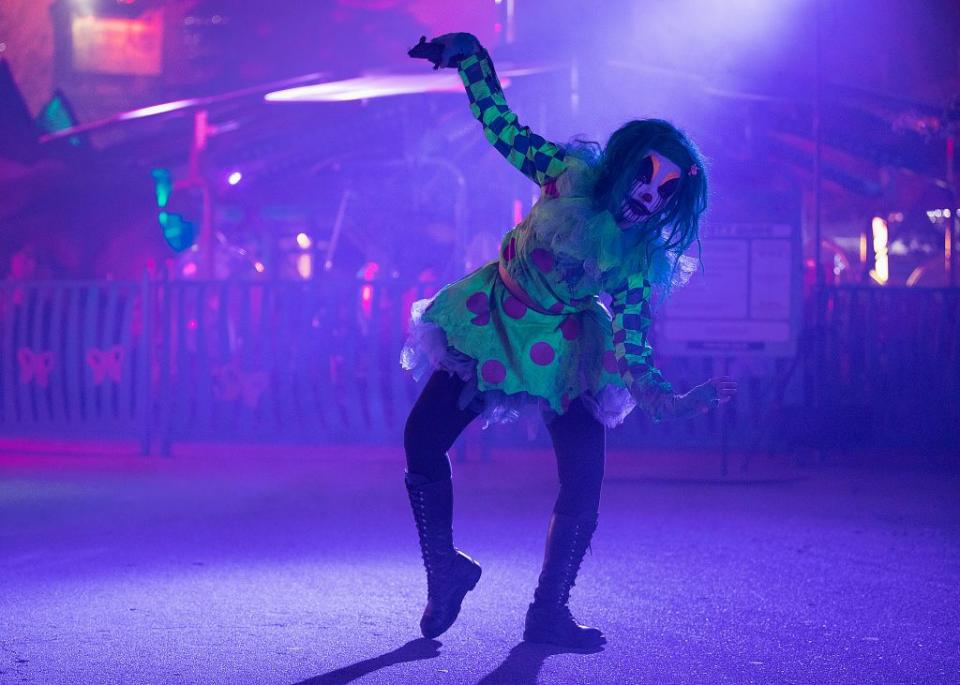
On Samhain, the Celts believed the dead were able to return to the world of the living, and also that those who had died that year were now able to cross over to the otherworld. So to keep evil spirits away, the Celts would wear disguises, like masks, according to the Encyclopedia Britannica and the Library of Congress. In Scotland, a similar tradition was known as “guising,” where children would dress up to protect themselves from spirits and go door to door asking for an offering. However, Morton told TODAY that our costume-wearing these days is a “very modern” tradition.
Trick-or-Treating
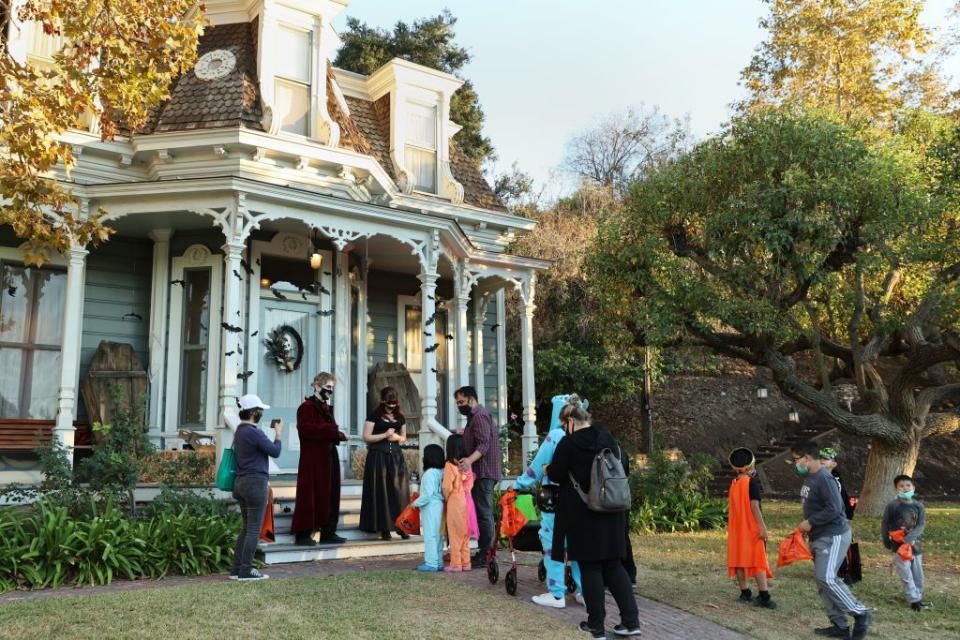
During Samhain, practitioners would leave out food offerings in honor of the dead, or to appease spirits. They would then give the uneaten food to those in need. But it’s also believed that people, including children, went door to door to ask for such treats during this time. This was also a tradition during All Souls’ Day (the day after All Saints’ Day), in which people would request food in exchange for prayers for the dead. Also known as “doleing,” it was customary for children and those in need during other times of the year, like on St. Thomas Day in Britain.
This style of “treating” carried over to the U.S. holiday. According to Halloween: From Pagan Ritual to Party Night, children could be found dressed up in costumes, begging for pennies in the 1920s.
According to the book Trick or Treat? Halloween in a Globalising World, the Celts thought of Samhain as a time of “instability,” as the spirit world became accessible. As such, “dares and pranks” were also part of the Samhain tradition and carried over to Halloween in the U.S. Youth would visit homes and businesses and request a treat in exchange for not causing mischief, like vandalizing the property.
But the “trick” aspect eventually got out of hand. “They were smashing light fixtures and setting fires and tripping people on sidewalks, and, in 1933, vandals did so much damage it became known as ‘Black Halloween,’” Morton told TODAY. To prevent such damage from occurring, cities implemented initiatives of passing out candy to convince kids it would be more fun to collect that than wreaking havoc—and trick-or-treating was born.
Mischief Night
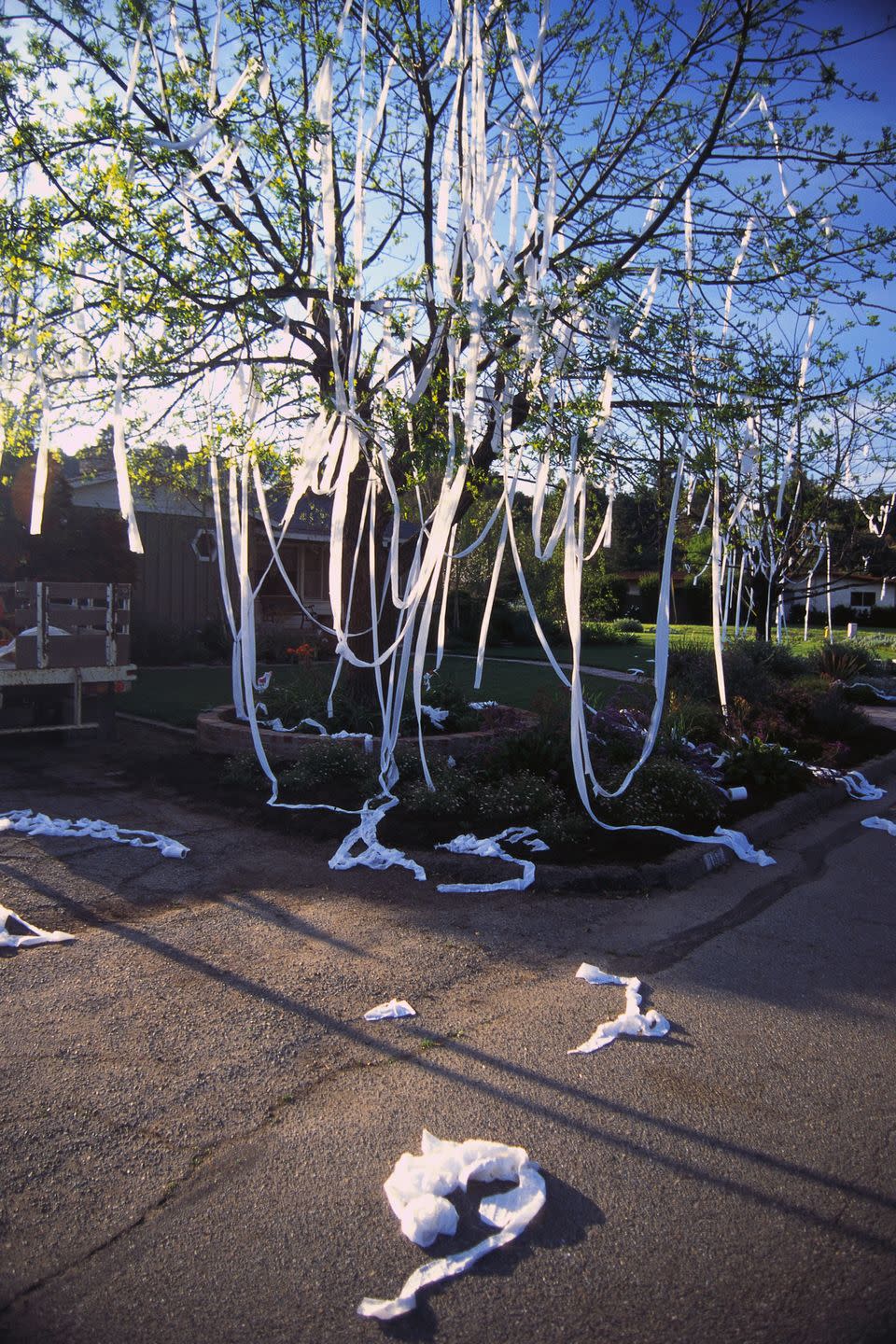
The tradition of “mischief night—also known as “devil’s night”—on the night before Halloween now seems to have taken the place of more harmful tricks. The Library of Congress also credits that tradition to Samhain, explaining that Irish and Scottish immigrants would practice “good-natured mischief” during Halloween. Today, that mischief often comes in the form of houses and yards being covered in toilet paper, eggs, silly string, and more. Unfortunately, more serious vandalism like arson and broken windows does occasionally still occur.
Mischief night isn’t as widespread as Halloween itself, though. It’s more of a Halloween tradition in the northeast U.S. and in parts of the U.K.
Carving Jack-O’-Lanterns
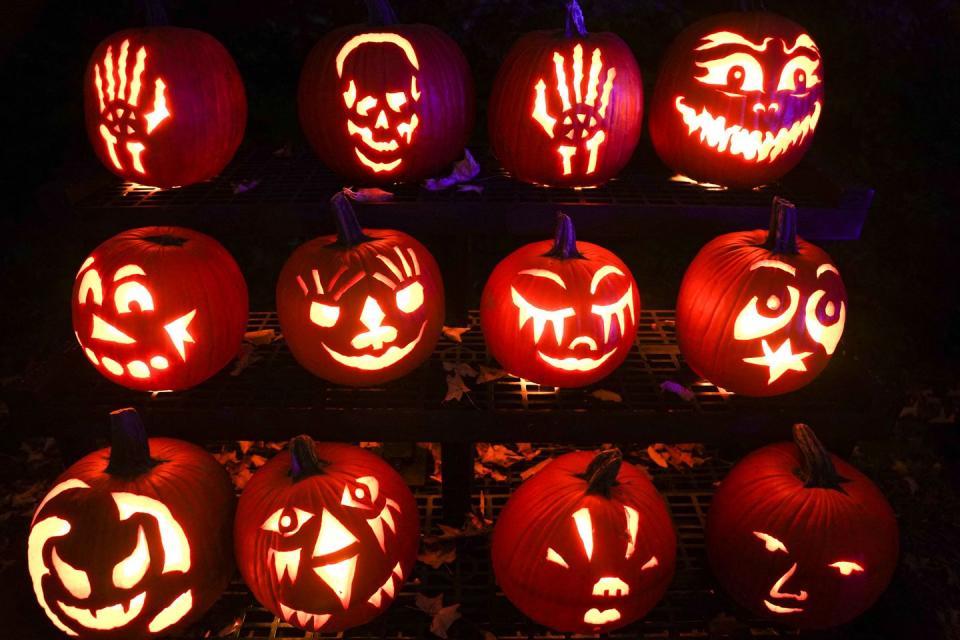
Before carved pumpkins, there were carved … turnips? As unlikely as that sounds—turnips don’t seem all that conducive to carving—the tradition dates back to Ireland, where Samhain was born. The tradition is said to stem from the Irish legend of “Stingy Jack,” a man whose soul was cursed to remain on Earth as a ghost because he tricked the Devil. People believed they could scare away spirits, like Stingy Jack, by making turnip lanterns: hollowing turnips out, giving them a face, and placing a lit candle inside. In Scotland, these were known as “neep lanterns.” Pumpkins became common to use after the tradition came to the U.S., likely because they’re native to North America and very common—plus they’re already mostly hollow and easier to carve.
Bobbing for Apples
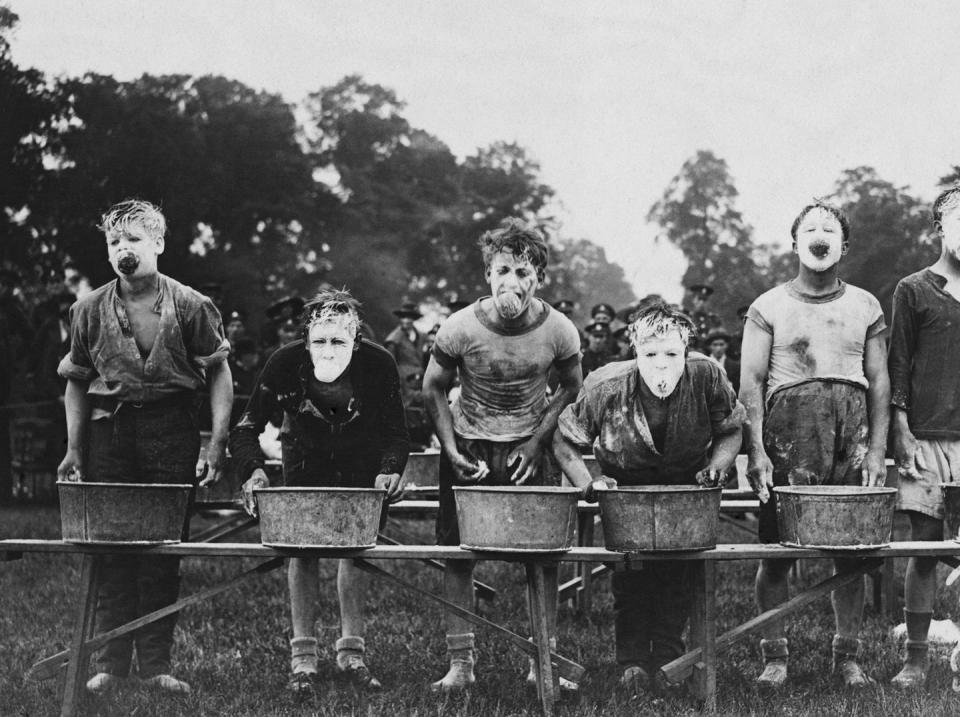
This tradition seems to have fallen a bit out of favor (which is understandable in a post-pandemic world, and given our modern society’s strong aversion to germs)—though you might still find this game, or some rendition of it, at Halloween parties today. And, it’s notably featured in the classic children’s animated movie, It’s the Great Pumpkin, Charlie Brown. (Speaking of traditions coming to an end, the movie unfortunately will not be broadcast this year for the second time ever since it first aired on TV 56 years ago. Bah humbug.)
In an article by Alison Richards, deputy supervising senior editor for NPR’s science desk, apple historian Joan Morgan explains that bobbing for apples was once a fortune-telling game of romance for young European men and women.
But the significance of the apple is far older than that, prehistoric even, and can be found across cultures. Over the ages, the apple has symbolized immortality, fertility, rebirth, and more. During the festival of Samhain, “to encourage the sun deity to return the following year, ancient Celts burned huge bonfires into the night and tied apples to evergreen branches,” Richards says.
Candy Apples
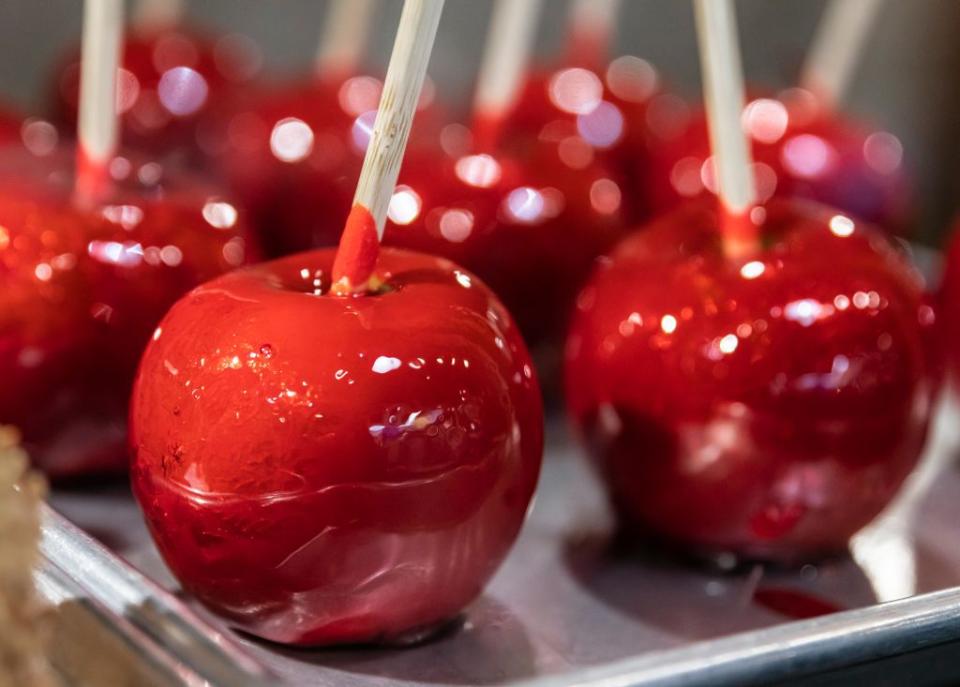
Similarly, candy apples are also associated with Halloween, and the fall season in general, though they’re a much newer invention. According to Morgan, a candy maker from Newark, New Jersey, named William Kolb created the tasty treat in 1908—and the tradition stuck. A few decades later in 1936, Hunter Candy in Moscow, Idaho, invented caramel apples, as reported by the Spokane Daily Chronicle.
You Might Also Like

